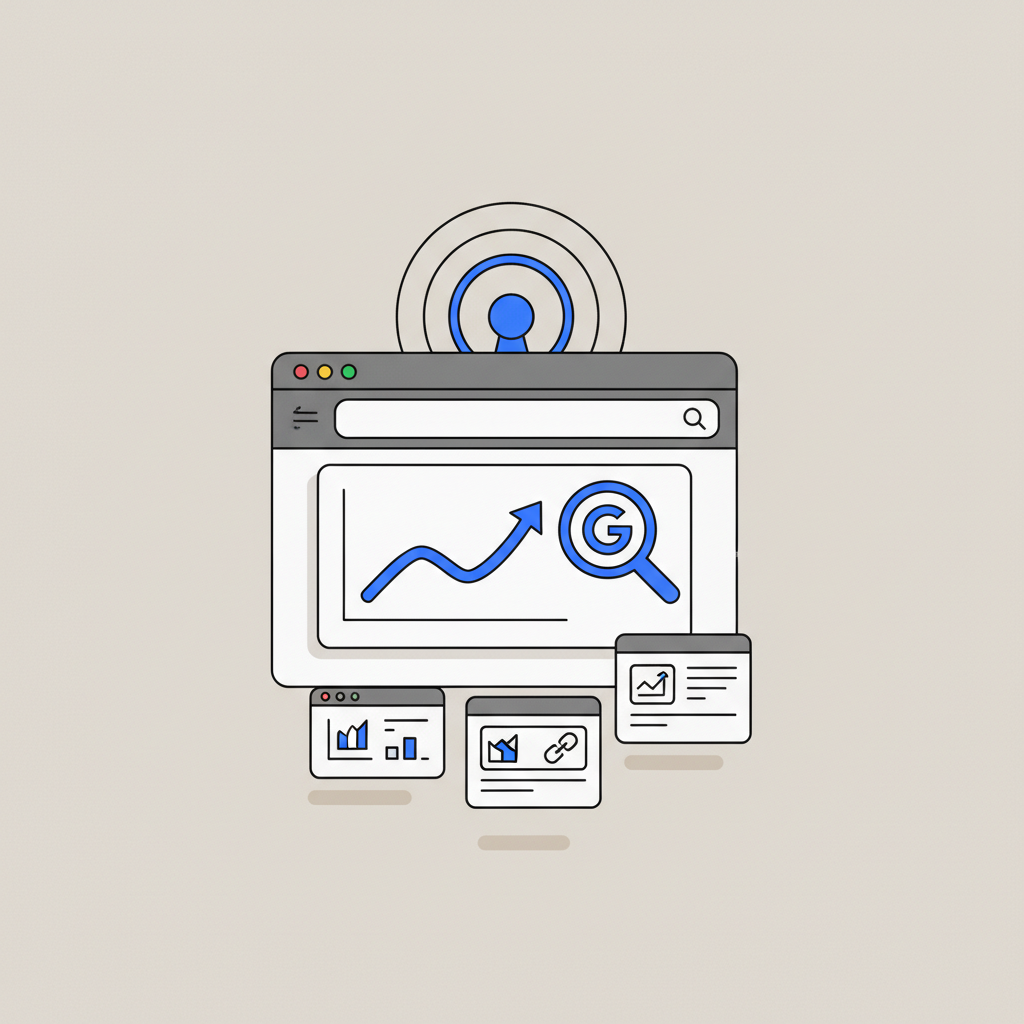In the complex world of Search Engine Optimization (SEO), few elements are as foundational and frequently discussed as links. They are the digital highways that connect the vast expanse of the internet, guiding both users and search engine crawlers from one page to another. For anyone serious about improving their website’s visibility, understanding the nuances of link building is not just beneficial—it’s essential. Yet, within this critical discipline, two terms often cause confusion: backlinks and referring domains.
Many marketers and business owners use these terms interchangeably, but they represent distinct, albeit related, metrics. One measures volume, while the other measures breadth. One tells you how many times your site has been cited, while the other tells you how many unique sources are doing the citing. Mistaking one for the other can lead to a flawed SEO strategy, focusing on vanity metrics instead of true authority-building signals.
This comprehensive guide will demystify these two core concepts. We will dissect the precise definitions of backlinks and referring domains, explore their individual importance, and place them side-by-side for a direct comparison. More importantly, we will move beyond definitions to discuss why this distinction matters profoundly for your SEO success. You will learn how to analyze your own link profile, understand what quality looks like, and discover actionable strategies to improve both metrics, ultimately building a more resilient and authoritative online presence that search engines like Google will reward.
What Are Backlinks? A Deep Dive
A backlink, in its simplest form, is a hyperlink from a page on one website to a page on another website. If Website A links to Website B, then Website B has a backlink from Website A. Think of them as the digital equivalent of a citation in an academic paper. When an authoritative website links to yours, it signals to search engines that your content is valuable, trustworthy, and credible.
This concept has been at the heart of Google’s ranking algorithm since its inception. While the algorithm has become infinitely more complex over the years, the fundamental principle that the quantity and quality of links pointing to a page are a primary indicator of its importance remains a cornerstone of SEO.
Types of Backlinks
Backlinks can be categorized in several ways, but one of the most crucial distinctions for SEO is between ‘dofollow’ and ‘nofollow’ links.
- Dofollow Links: This is the default state for a hyperlink. A dofollow link passes authority, or “link equity,” from the linking page to the target page. These are the types of backlinks that directly and significantly influence your search engine rankings.
- Nofollow Links: A ‘nofollow’ tag (
rel="nofollow") instructs search engine crawlers not to follow the link and not to pass any link equity. These are often used for paid links, user-generated content, and links in forums. While they don’t directly boost your rankings, they can still drive valuable referral traffic and contribute to a natural-looking link profile.
Beyond this technical distinction, backlinks can also be categorized by their origin:
- Editorial Links: Links given naturally by another website because they found your content valuable. These are the holy grail of link building.
- Acquired Links: Links you actively build through outreach, such as guest blogging or digital PR campaigns.
| Backlink Attribute | Description | SEO Impact |
| Dofollow | The default link type that passes authority (link equity). | High. Directly contributes to search engine rankings. |
| Nofollow | A link with a rel="nofollow" tag that does not pass authority. | Low to None. Does not directly impact rankings but can drive traffic. |
| Editorial | A link earned naturally due to high-quality content. | Very High. Seen as a strong, organic vote of confidence. |
| Acquired | A link built through manual outreach or placement efforts. | Varies. Can be high if placed on a relevant, authoritative site. |
Export to Sheets
Ultimately, a single backlink is a single vote. While accumulating these votes is important, the real power comes from understanding where those votes are coming from.
What Are Referring Domains? The Bigger Picture
If a backlink is a single vote, a referring domain is the unique voter. A referring domain is a website from which you have at least one backlink. It is the source, or the domain, that is linking to your site.
This is where the critical distinction lies. For example, if TechCrunch.com links to your website in ten different articles, you have:
- 10 total backlinks
- 1 referring domain (TechCrunch.com)
A single referring domain can give you multiple backlinks, but the number of backlinks will always be equal to or greater than the number of referring domains.
Why Referring Domains Matter So Much
Search engines place immense value on the diversity of your link profile. A high number of referring domains is a powerful signal that your website is widely recognized as an authority across different corners of the internet. It demonstrates that your credibility isn’t just confined to one or two sources but is acknowledged by a broad spectrum of websites.
In general, diversity is more important than volume. For instance, a website with 500 backlinks from 250 referring domains is almost certainly stronger than a website with 1,000 backlinks from only 10 referring domains. The diverse portfolio of ‘voters’ is a much more compelling and trustworthy signal of authority and relevance.
Focusing on increasing your referring domains helps you:
- Build Robust Authority: It proves your value to a wider audience.
- Mitigate Risk: A diverse profile is more stable; if you lose one referring domain, your SEO won’t be severely impacted.
- Reach New Audiences: Each new referring domain exposes your brand to a new, targeted audience.
Referring Domains vs. Backlinks: The Core Comparison
Understanding the definitions is the first step, but seeing the two metrics in a direct comparison clarifies their distinct roles in SEO strategy.
The primary difference boils down to breadth versus depth. Referring domains measure the breadth of your authority across the web, while backlinks measure the depth or volume of mentions.
| Feature | Referring Domains | Backlinks |
| Definition | A unique website that links to your site at least once. | A single hyperlink from one webpage to another. |
| What It Measures | The breadth and diversity of your link profile. | The total volume of links pointing to your site. |
| Primary Analogy | The number of unique voters. | The total number of votes cast. |
| SEO Significance | A very strong signal of overall domain authority and trustworthiness. | A foundational ranking signal, but its value is highly contextual. |
| The Rule of Thumb | More is almost always better. Diversity is key. | Quality over quantity is paramount. |
| Strategic Focus | Prioritize acquiring links from new, relevant domains. | Aim to earn multiple links over time from authoritative pages. |
Export to Sheets
The Law of Diminishing Returns
The most important concept is the idea of diminishing returns for backlinks from the same domain. The very first backlink you get from a new, high-authority referring domain is incredibly valuable. Subsequent links from that same domain still drive traffic and reinforce the relationship, but their impact on your overall domain authority is progressively smaller than that first link. The real game-changer is expanding your network of unique, authoritative supporters.
Quality Over Quantity: What Makes a Good Link Profile?
Simply counting the number of backlinks or referring domains is a surface-level analysis. A truly effective SEO strategy dives deeper to assess the quality of the link profile.
Key Quality Factors for Referring Domains
- Domain Authority / Domain Rating: Look for links from domains with high scores (like Moz’s DA or Ahrefs’ DR) that estimate the overall strength of a website.
- Topical Relevance: A link is far more valuable if the linking domain is highly relevant to your industry. A link from an industry trade publication is superior to one from an irrelevant site, even if their scores are identical.
- Trustworthiness: Links from highly trustworthy domains (like .edu, .gov, or established news organizations) are a strong signal of credibility.
Key Quality Factors for Backlinks
- Anchor Text: The clickable text should be relevant to the linked page and appear natural. Over-optimized anchor text (using the same exact-match keyword for every link) can be a red flag.
- Placement on the Page: A link placed editorially within the main body of a piece of content carries significantly more weight than one in a footer or sidebar.
- Authority of the Linking Page: A link from a highly-trafficked, well-linked article is more valuable than a link from an obscure page on that same site.
How to Analyze Your Link Profile
To improve your link profile, you first need to understand its current state. Regular analysis is crucial for identifying strengths and opportunities.
- Google Search Console: The best free tool. The ‘Links’ report shows you your ‘Top linking sites’ (referring domains), the pages on your site that are linked to the most, and the most common anchor text used.
- Third-Party SEO Tools: Platforms like Ahrefs, Semrush, and Moz offer far more detailed backlink analysis. They track your link growth, analyze competitor profiles, and help identify toxic links.
When conducting your analysis, focus on these key areas:
- The Backlink-to-Domain Ratio: A high ratio (e.g., 20:1) suggests a reliance on a few sources. A lower ratio (e.g., 2:1) suggests a more diverse profile.
- New and Lost Domains: Are you consistently acquiring links from new unique domains?
- Competitor Benchmarking: Analyze your top three competitors’ total referring domains and the types of content that are earning them links.
Actionable Strategies to Increase Referring Domains and Backlinks
The best strategies focus on acquiring new referring domains, as this has the most significant impact on your overall authority.
Strategies for Acquiring New Referring Domains
- Digital PR and Outreach: Create something newsworthy—such as original research, a data study, or an industry report—and pitch it to journalists and publications. They will link back to your site as the source, earning a high-authority link from a new domain.
- Guest Blogging: Write and publish an article on another reputable, relevant website in your niche. In exchange for your content, you typically get an author bio link back to your site.
- Create Linkable Assets: Develop in-depth resources that others in your industry will want to reference and link to, such as ultimate guides, free tools/calculators, or unique infographics with compelling data.
- Broken Link Building: Find a relevant resource page on a high-authority website that has a broken (dead) link. Create a similar or better resource on your site. Then, contact the site owner, inform them of the broken link, and suggest your resource as a replacement.
Strategies for Acquiring More Backlinks (Building Page Authority)
- Strategic Internal Linking: Use a strong internal linking structure to distribute link equity throughout your site, guiding both users and search engines to your most important content.
- Content Promotion: Actively promote every new piece of content to your email list, social media followers, and industry communities to maximize the chance of earning organic links.
- Skyscraper Technique: Find a popular piece of content in your niche that has earned a lot of backlinks. Create something significantly better, then reach out to the websites linking to the original and show them your superior version.
Conclusion: Turn Your Strategy Into a Sustainable Growth Engine
Backlinks and referring domains are two metrics that are essential for SEO, but they measure different things. Backlinks represent the volume of applause, while referring domains represent the size and diversity of the audience giving that applause.
Focusing solely on the total backlink count is a vanity metric that can lead you astray. Instead, a successful, long-term SEO strategy must prioritize the acquisition of links from a wide array of unique, authoritative, and relevant referring domains. This approach builds a diverse and robust portfolio of endorsements from across the web.
By understanding the critical difference between these two metrics, analyzing your profile with a discerning eye, and executing targeted link-building strategies, you can build a powerful and resilient foundation for sustainable organic growth. Stop just counting links and start building a network of authority.
Frequently Asked Questions
What is a good ratio of backlinks to referring domains?
There is no single ‘perfect’ ratio, but a lower ratio is generally a sign of a healthier, more diverse link profile. For example, a ratio of 2:1 (e.g., 1,000 backlinks from 500 referring domains) is much stronger than a ratio of 20:1 (e.g., 1,000 backlinks from 50 domains). Focus on consistently acquiring links from new, high-quality domains.
Is it better to have more backlinks or more referring domains?
It is almost always better to have more referring domains. One link each from 100 different authoritative websites is far more valuable to your overall domain authority than 100 links from a single website. Prioritize strategies that expand the number of unique sites linking to you.
How can I check my referring domains for free?
The best free tool for checking your referring domains is Google Search Console. Once you have verified your website, navigate to the ‘Links’ report in the sidebar. This report will show you a list of your ‘Top linking sites,’ which are your referring domains.







